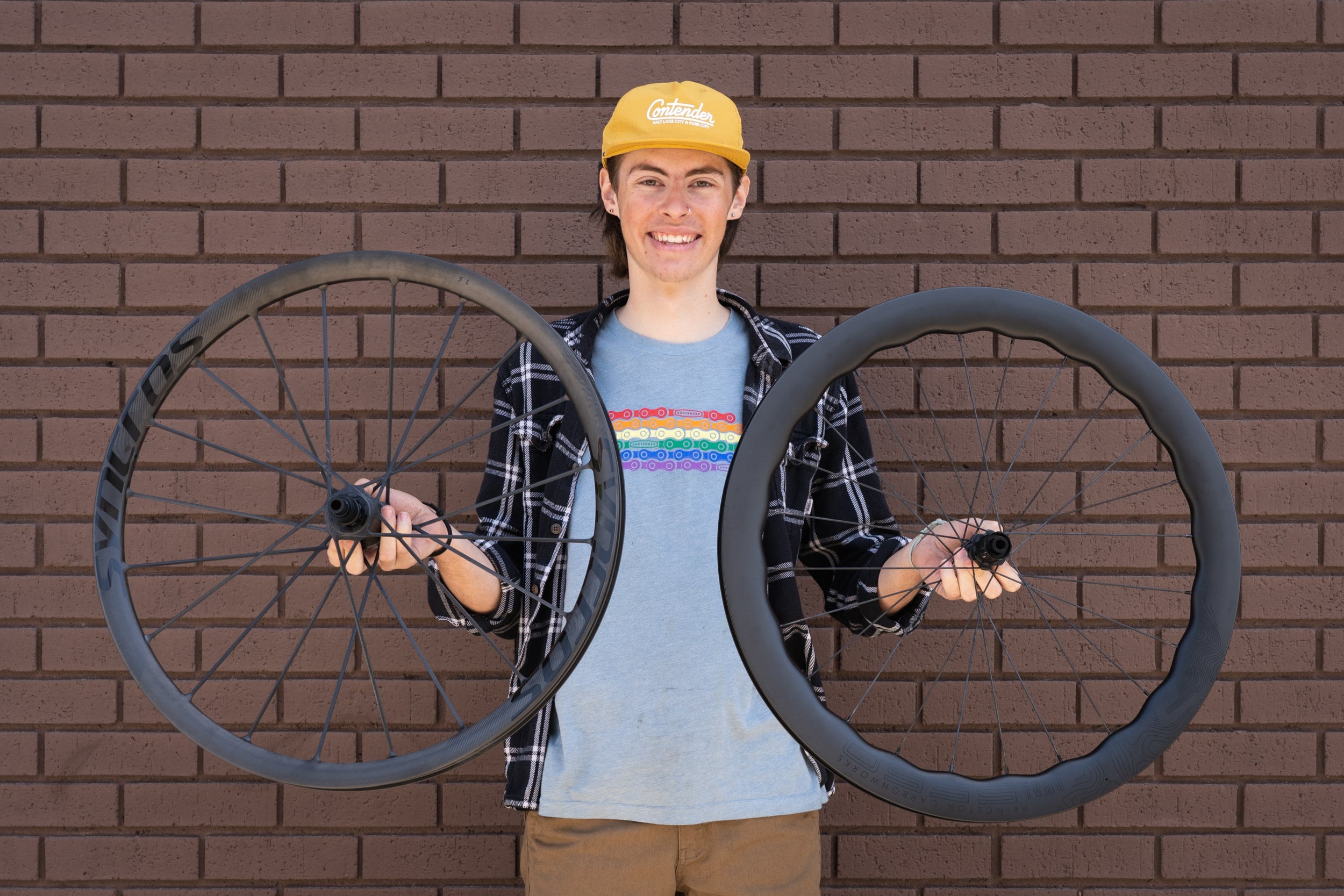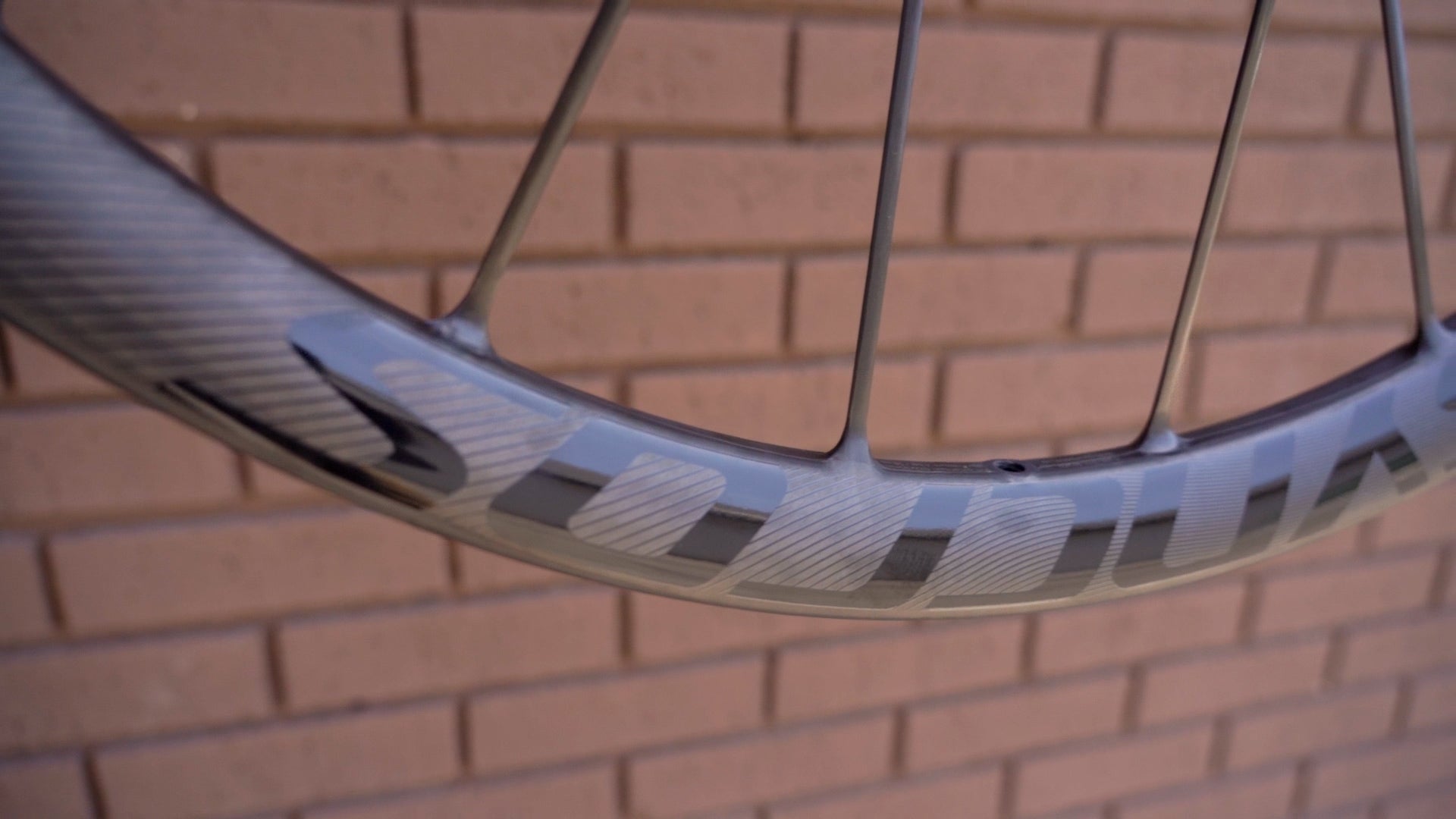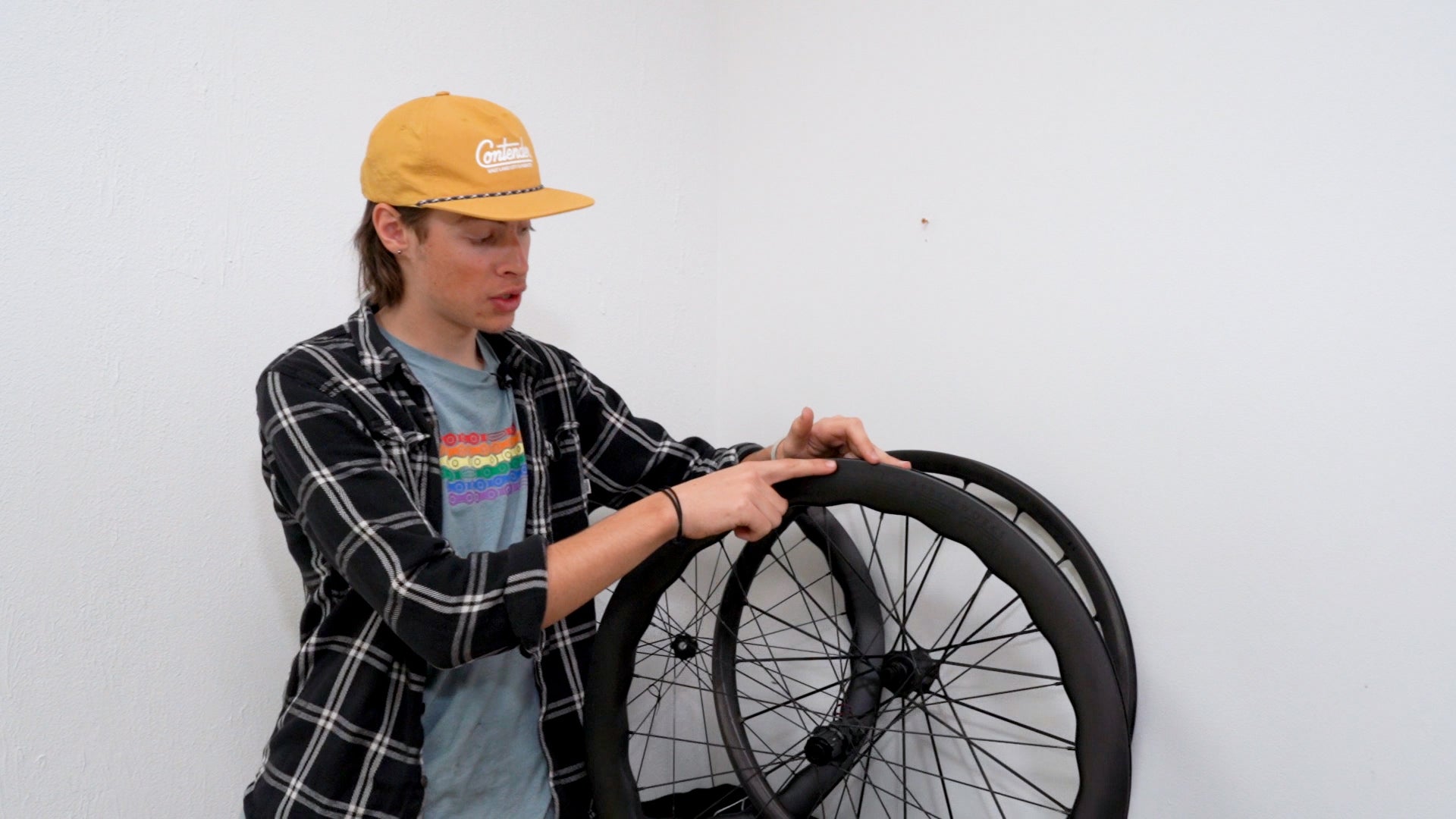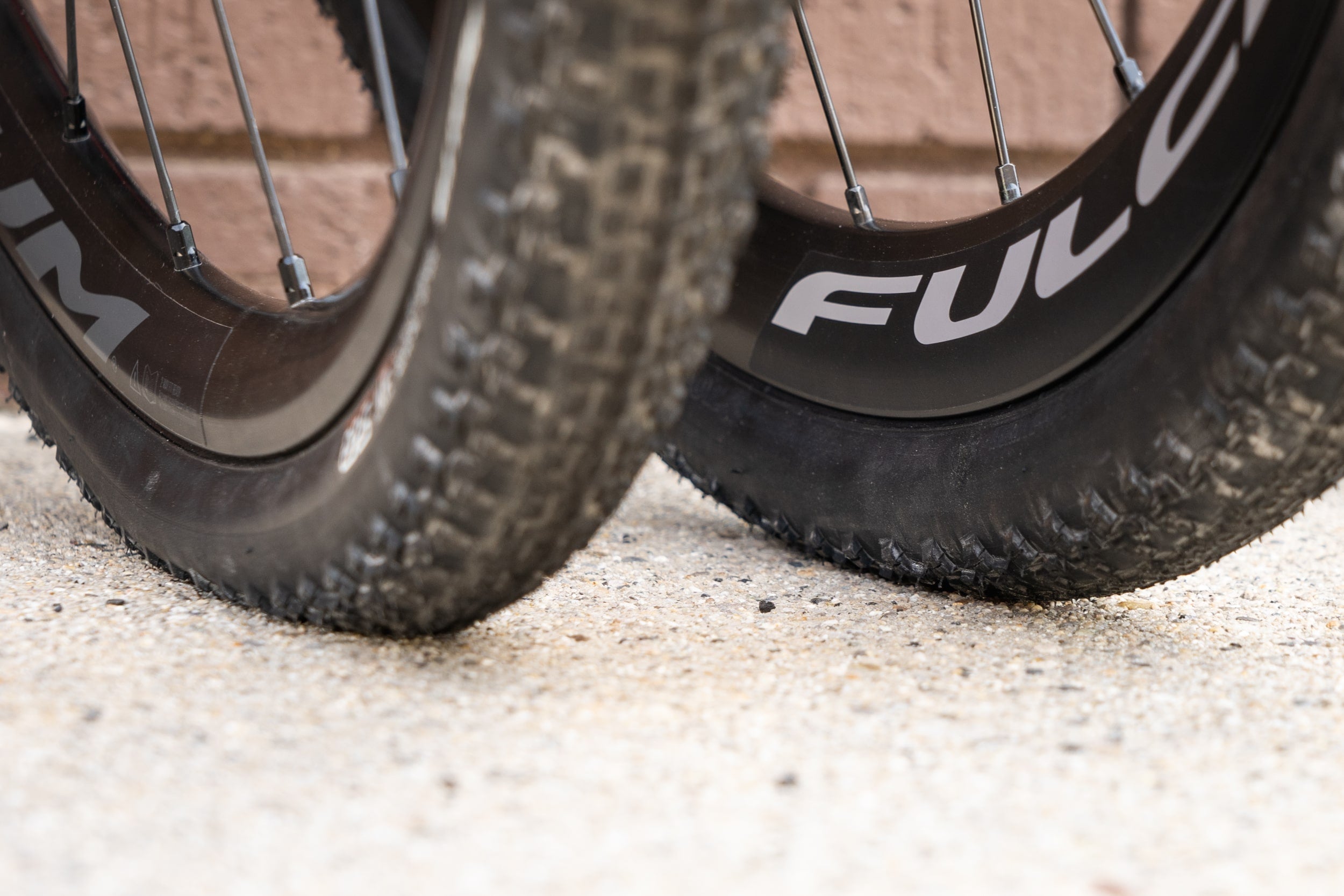
What You Need To Know About Wheel Upgrades
For many of us that are passionate about cycling, part of the fun is personalizing and upgrading our machines. We’re lucky to live and ride in an age where technologically advanced parts and components are available on almost every level of bike from the factory, but it’s still fun to change things up from time to time. Upgrades can shave weight, add style and help you go faster if that’s what you’re after. Parts and accessories just keep getting better too, so there’s no real limit to what you can do to really make your bike “yours”. Whether it's your mountain bike, road bike, gravel rig or anything in between, one of the best places to start upgrading is often with the wheels. One of the great things about wheelsets is the sheer number of options available. Manufacturers often capitalize on the availability of basic wheelsets to deliver a competitive complete bike that features a higher end frame and or componentry. You obviously still get wheels that get the job done, but the door is left open for an easy and immediate upgrade in performance.
Why A Wheelset Upgrade?
Why should you upgrade your wheels over something else, like brakes or drivetrain? There are multiple reasons why wheels are some of the most important upgrades you can do to a bike, especially on lighter-weight rigs like road bikes, gravel bikes and XC mountain bikes. Wheel upgrades matter a little less on trail and enduro mountain bikes, but we will get to that in a bit. A wheel upgrade can have a huge impact on how a bike feels to the rider, and can result in a faster and better quality ride.

Weight
The biggest advantage a wheel upgrade can offer is lower weight. Wheels are one of the easiest places to shave lots of grams, carbon wheelsets often saving hundreds. To put into context how much weight you can save, we’ll compare a crankset: the difference between a Sram XX1 crankset and a Sram X1 crankset is 100g, a huge difference. But the difference between a Syncros Silverton 2.0 alloy wheelset and a Silverton 1.0s carbon wheels is 500g! That’s the difference of over a pound (for you “freedom unit” users out there). Not only are wheels an area to save a TON of weight, but it’s all rotational weight too. Rotational weight is the best place you can save weight on a bike. Let's talk a little about the physics of rotational weight to help explain that. My namesake Isaac Newton’s Second law reads as such (from NASA): “[Newton’s] second law defines a force to be equal to change in momentum (mass times velocity) per change in time. Momentum is defined to be the mass (m) of an object times its velocity”. What this means is that as soon as something starts spinning and moving, (like a bike wheel for instance), it starts to feel like it weighs significantly more. In short, rotating mass and/or weight like wheels, is roughly three times harder to get moving than sprung weight, like the rest of the bike.
This ends up meaning that every 1g of weight shaved off your wheelset can equate to shaving 8g off of static parts on your bike (such as the frame, bar, stem, fork, etc). This means that (in theory) getting a wheelset that is 300g lighter would feel like you saved 2-2.4kg off your static parts. I would note however, that you can only feel rotational inertia and weight differences in acceleration and deceleration. This means that if you were maintaining a constant speed, the heavier and lighter wheels would feel the same from a weight standpoint. But keep in mind how often you are accelerating and decelerating on a ride; absolutely constantly, so it feels like a pretty big difference.
When thinking about the wheel weight equation, keep in mind that the farther away from the axle of rotation the weight is, the more the rotational inertia affects your acceleration. In other words, the rim weight is a big part of the overall picture. So if you were wanting some awesome wheels but didn’t want to spend an absolute ton of money, buy something with a very nice rim, and maybe more of a mid-range hub if possible, this will be the best bang for your buck.

Ride Feel/Quality
When talking about carbon wheels, the conversation about ride feel is always brought up. Why is this? Carbon wheels increase stiffness. This means that on a gravel or mountain bike, you have a wheel that tracks more predictably in a descent. Carbon wheels also flex less in corners. On a road bike you will also notice the stiffness difference when accelerating, as more of your power is being transferred to the ground. (This is also a factor on gravel and mountain bikes as well.)
There’s more to the ride quality of carbon wheels than just the stiffness however. They also reduce small bump vibrations that make it through to the rider, which can prevent numb hands and fatigue on a long ride. This is an especially important consideration with gravel and MTB wheels.
Rim Depth/Width Profiles
Carbon is known for having a fantastic strength to weight ratio, which lets you construct much deeper and/or wider rims without the same weight penalty as with alloy rims. An increased internal rim width will provide improved cornering, comfort and overall traction, while a deeper (or taller) rim provides proven aerodynamic benefits. But on alloy wheels, increasing these attributes also results in more material which means a heavy rim. This is why alloy rims tend to be shallower and narrower.

How much does a deeper rim actually give me? This is a question I hear asked all the time, and there are pros and cons to deeper wheels. To start, the biggest benefit: Aerodynamics. A deeper rim (40-80mm) when compared to a shallow rim (18-30mm) can save a ton of power, reducing your overall drag and cutting through the air faster. Average speeds on a 60mm wheel when compared to a standard box section 20mm wheel can be 2-3 mph higher! However, if you are the constant canyon climber and that is what you love, maybe stick to a 30mm wheel, as deeper carbon wheels are obviously heavier than shallow carbon wheels. The other thing that deep wheels might not be ideal for is wind. Gusty days can catch a deeper wheel and push the bike around a bit. *Contemporary aerodynamic design has mitigated this a great deal, but it is still worth considering.
Increasing the internal rim width comes with several benefits. A wider rim increases volume and gives the rider more tire sidewall support. A wider rim will also improve traction by effectively putting more rubber on the road. With a wider rim you can also run a wider tire while keeping a straighter sidewall, avoiding the characteristic we call “ballooning”. Ballooning is bad because it strains the sidewalls of the tire and results in a rounder profile at the contact patch, thus decreasing the amount of surface contact with the tire. The increase in tire volume and sidewall support also helps decrease rider fatigue and increase comfort. The increased rim width helps deliver a smoother ride, and lets you ride faster, for longer.

As mentioned, there are a plethora of bike upgrade options available out there. Wheels can definitely be a huge bang for the buck and they’re an upgrade that you’ll appreciate every time you ride. Check out our wheelset options or come in and chat with us at the shop. We’re always happy to keep you rolling!
Hey Robert,
Thanks for the comment! There’s definitely a lot more to it then what we go over in this blog for sure. There are definitely a lot of studies, like the ones you mentioned that show that wheel weight doesn’t have a huge difference on a rider. To the extent they are talking about, they are right, however the issue with lots of studies like this, is where they are looking at the weight. Once moving, a heavier wheel vs a lighter wheel feel the same, which is completely true and sound physics. Importantly, a lot of what these kind of journals aren’t talking about is acceleration. A lot of the studies based around saying “wheel rotational weight doesn’t matter” forget that most of us non-World Tour mere mortals can’t maintain perfect pedaling power all the time on a ride. Every time we change cadence, power, get out of the saddle, grab a bottle etc, the bike is slowing down. Every time the bike slows down, the rider must get it back up to speed again. All of this happening is acceleration. As noted, acceleration IS the place where rotational weight does make a difference, even if not a lot. Pile this on-top of how every time you turn, corner, or hit your brakes or anything like that over the course of a ride, and need to accelerate back up to speed, this can add up. Even if time-wise you aren’t gaining a whole lot, this all helps improve the ride quality of the bike to the rider. This can make a difference as fatigue prevention is the name of the game. A lighter rotating mass wheel will also corner a lot “nicer” and faster. This is something you can notice by not even getting on the bike. By having two wheels, one heavier and one lighter, and hold your hands on both sides of the hubs, and spin the wheel. Then try to turn the wheel side to side, as if you where cornering left or right, and you can tell how much harder it is to lean the heavier wheel once it gets spinning. Nicer wheels have plenty of benefits, like aerodynamics, comfort, ride feel, stiffness, wider internal rims and small bump vibration compliance. But they also happen to most of the time be lighter in addition. This difference in acceleration is super notable in things like XC racing, where the terrain is rolling, constantly changing, and a lighter wheel makes a bigger difference. In XC racing you can see most riders do use much higher end wheel for this reason. If you have any other questions on wheels feel free to reach out to the shop!
Isaac Boyden on
Hi there. I am curious what you think about the data, analysis, and modeling available in peer reviewed publications and from cycling wheel engineering firms on the effect of rotating weight in cycling that concludes that there is little to no difference in performance between “light” (say 1200 gm) wheelsets and “heavier” (say 1600 gm) wheelsets? A couple or resources on this are a video by GCN Tech and an article by a blogger:
https://www.youtube.com/watch?v=0QDnUkUaQfk
https://bike.bikegremlin.com/14636/rotating-mass-myth-bicycle-wheels/
I’ve read some of the peer-reviwed publications on the subject and, as a physicist, find no errors or omissions in the presented analyses. It’s clear that many wheel manufacturers make a big deal about rotational weight and produce very light wheelsets to address the “negative” effects of higher rotational mass, but the available data does not seem to support these perceived “negative” effects. The aerodynamics of the wheel can play a much greater role than rotational weight and there are further arguments that a heavier wheel would actually be superior depending on the race course – particularly in a time trial. These results are, of course, bounded by the range of weights typically used on racing bikes. Super heavy wheels may perform differently and in a non-linear fashion. Most of the data and modeling available is in the 1000 gm – 2000 gm range. I’ll point out that wheel weight can have a greater effect as rider weight (and, therefore, the ability to produce power) is reduced. For a lighter rider with lower absolute power production capability, it will take a higher proportion of one’s FTP to “spin up” a given wheelset than for a heavier rider with a larger absolute power production capability. Although I haven’t seen any data on this aspect it may turn out that lighter wheels are more important for lighter riders or riders with lower absolute power production capability.
I will be interested in your thoughts. Thanks!
Robert Youngman on